The Bay Trail Preview: Intel Atom Z3770 Tested
by Anand Lal Shimpi & Brian Klug on September 11, 2013 12:00 PM ESTIn addition to showing Bay Trail running on a Windows 8.x platform, Intel showed us a “pre-beta” version of the platform running Android 4.2.2. I have to emphasize that the build they showed us definitely seemed pre-beta, as there was some instability, but overall the build was good enough to run some tests on and get a feel for. Intel made it clear that they do have a lot more work to do on their Android build before it’s considered close to final quality than the Windows equivalent.
Inside Android we can still see the CPU state table data and how long the cores are sitting in each performance state still, despite this now being managed in-silicon on Bay Trail. In addition Android sees the 2.39 GHz Z3770 boost frequency and reports it. I didn’t see any strange behavior on the device while running tests and watching CPU frequency, if anything the reference design platform stayed at the maximum boost frequency even with four cores plugged in for an impressive amount of time. Of course this is a tablet so there’s more TDP to play around with compared to a phone.
Depending on where you were in the Android UI, there was some definite stutter, but I’m told this is a result of an issue with Dalvik not allocating threads to cores properly that Intel is still tuning, something which you can see plays itself out as well in the AndEBench Java test that runs in Dalvik. The launcher especially had some stutter, but Intel claimed they were aware of it and that final performance in areas like that would be dramatically improved. Regardless of the state of Bay Trail’s Android port, it affords us the opportunity to look at performance through our pretty standard benchmark suite.
On the CPU side for Android we’re still limited to just a few tests that rely on a combination of native code and stuff that runs inside the browser. That means AndEBench, JavaScript benchmarks, and part of Vellamo.
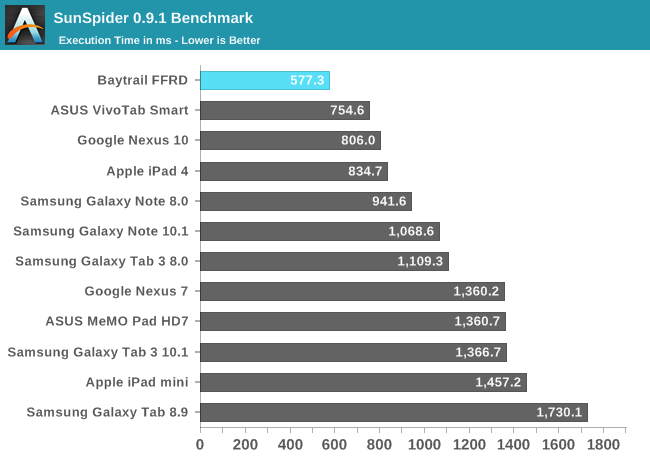
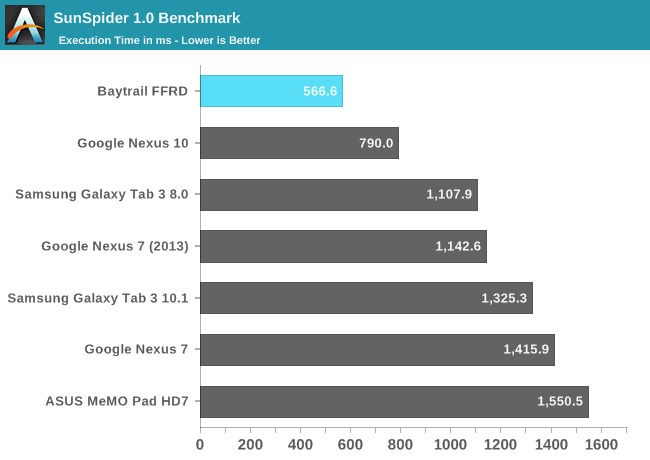
Sunspider has been a regular staple but in recent time has become an exercise in browser JavaScript engine optimization rather than actual performance. Nevertheless the FFRD takes the crown in both 1.0 and 0.9.1 (we have more tablet data from the 0.9.1 version so I replicated it here).
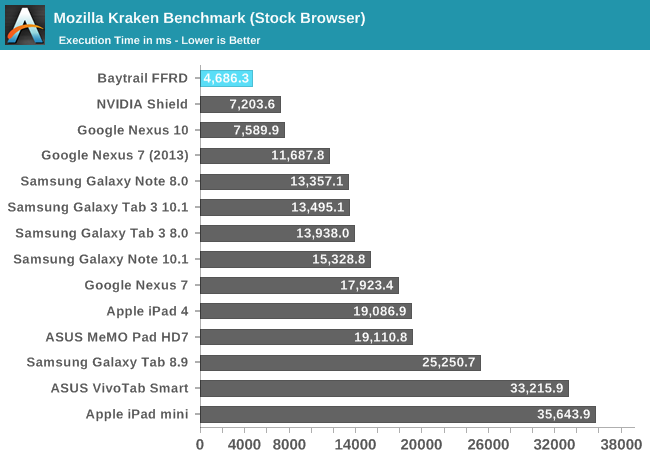
Kraken is another JavaScript benchmark which hasn’t quite been an optimization target everyone has gone after lately, and it’s also longer, which makes it a bit more reliable. Once again Bay Trail takes the crown here with notably faster JS engine performance.
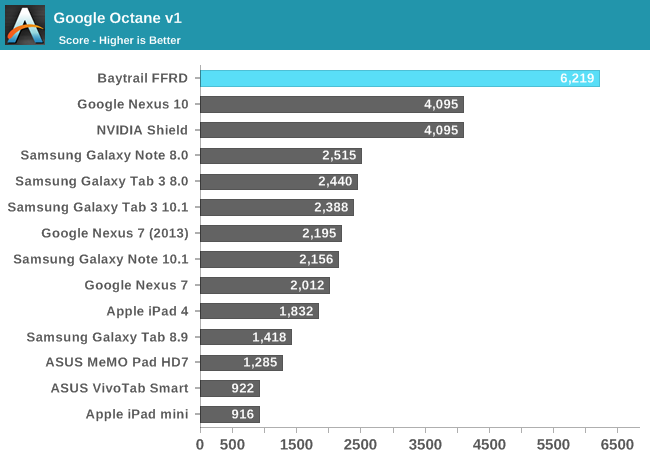
Google Octane is another JS test that isn’t quite as platform optimized yet, here there’s once again dominance by Bay Trail with just over a 50 percent higher score.
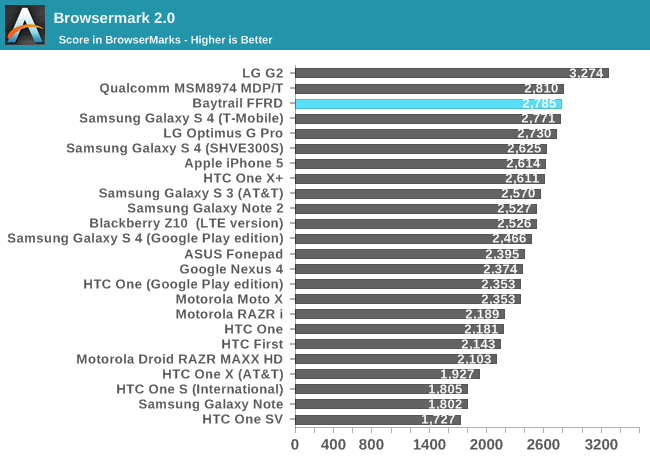
Browsermark has a combination of both JS tests and other web related performance metrics. Here the Bay Trail platform lags behind the 8974 based devices slightly. This isn’t a raw JavaScript benchmark again but rather a more holistic web browsing performance test, so it’s interesting to see Bay Trail a bit behind here.
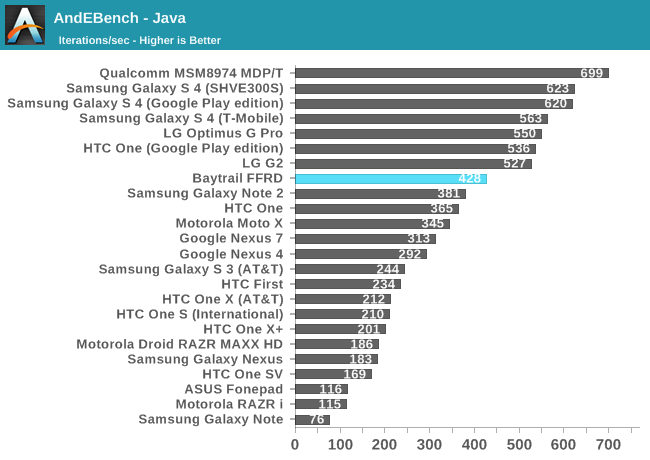

AndEBench is a combination native compiled microkernel benchmark (indicative of NDK application performance) that also runs a very similar workload atop Dalvik like a normal Android Java application. Here we can see what Intel was talking about when they said they have more work to do getting Dalvik working properly at dispatching threads to appropriate cores, hopefully the Java number will climb considerably. The native test also shows a lead over the competition.
GPU Performance
While Bay Trail clearly leads on the CPU side, its GPU performance is more middle of the road - at least among the higher end SoCs. In 3DMark Bay Trail's GPU performance is aided by the more CPU bound nature of the benchmark, but here Intel is able to beat the Snapdragon 600. Snapdragon 800 on the other hand pulls ahead by around 35%.
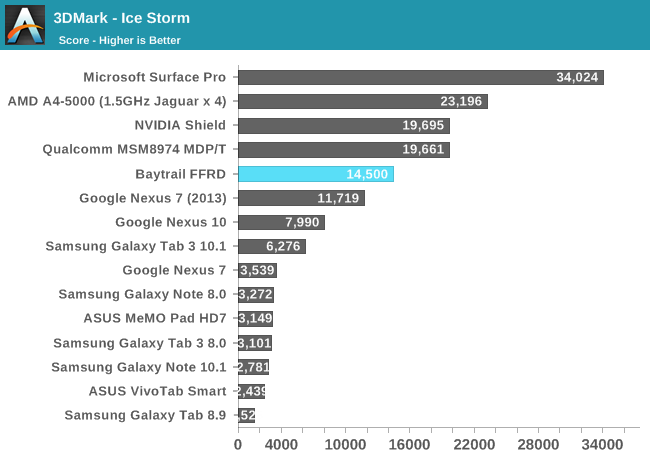
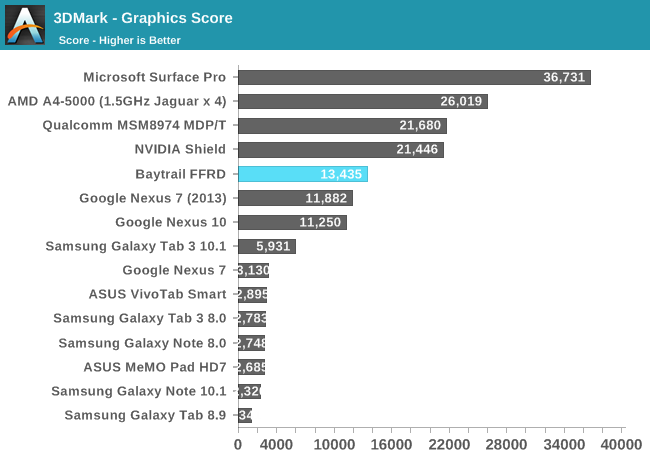
The 3DMark Physics test is effectively a CPU test, which once again plays to Bay Trail's strengths. Here it's faster than Snapdragon 800 and Cortex A15. Only Ivy Bridge is quicker in a tablet.
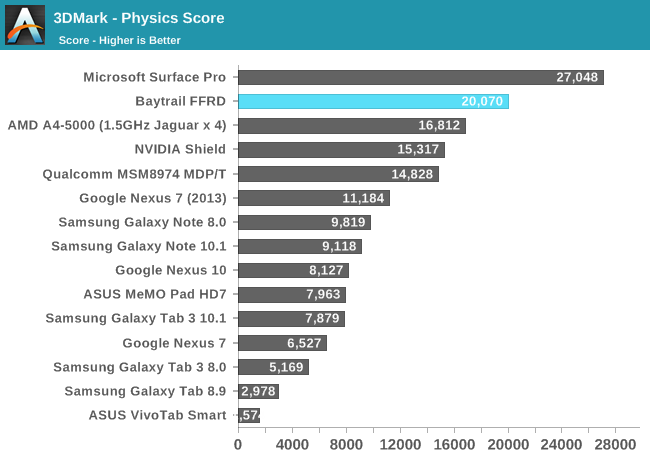
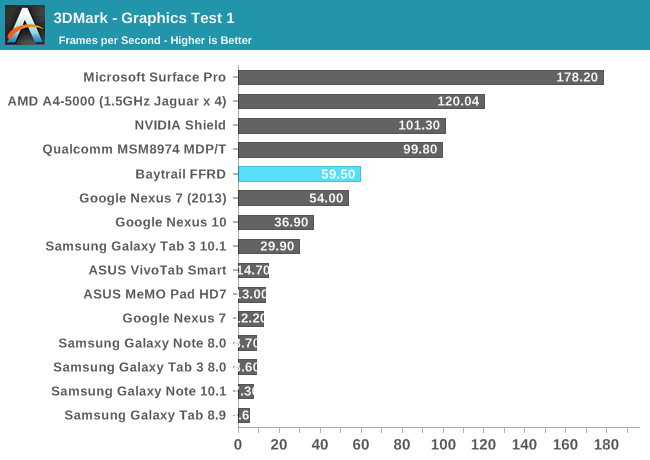
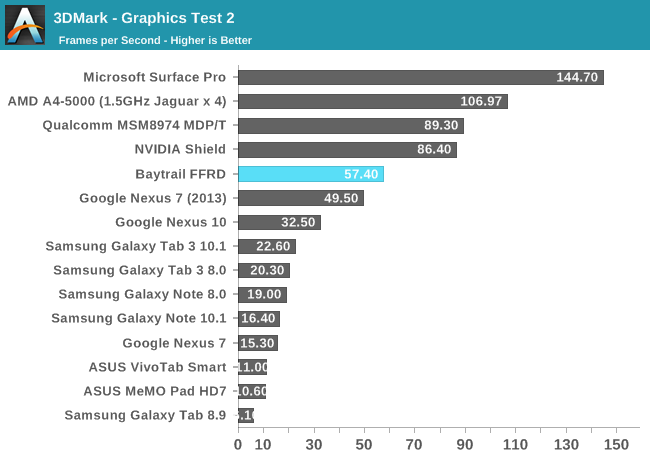
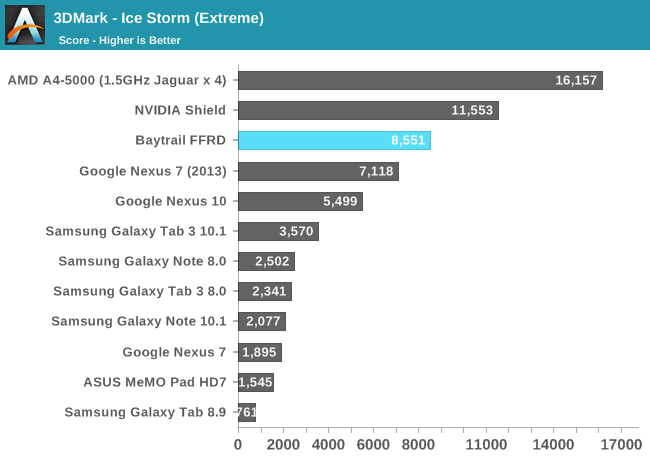
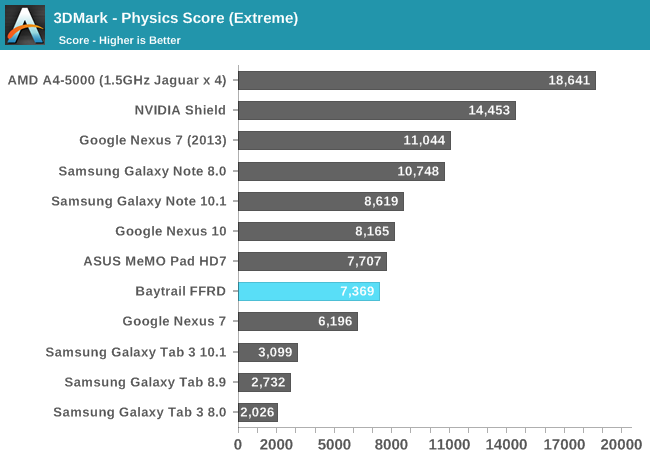
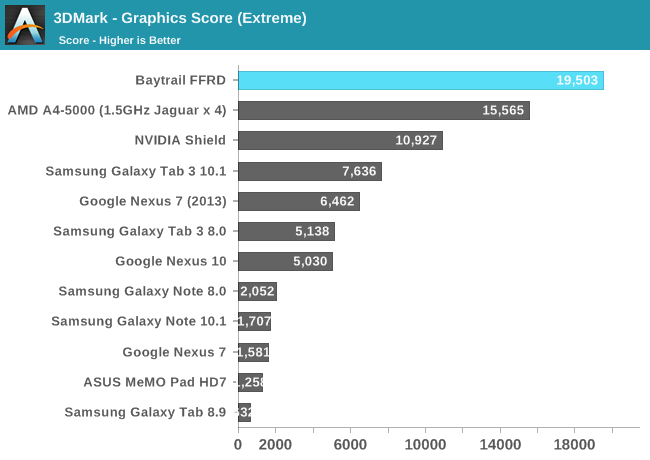
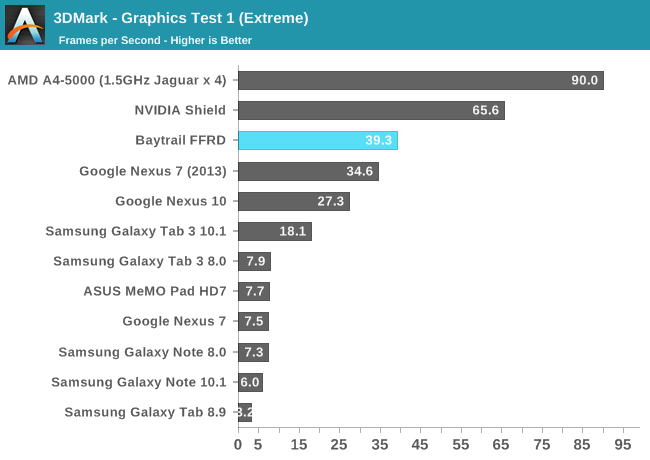
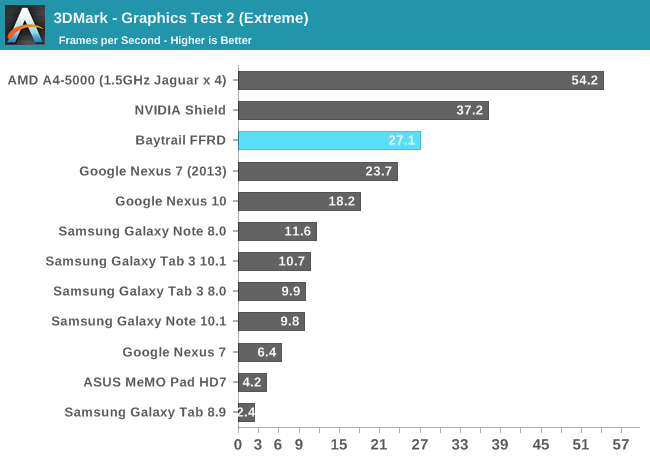
Basemark X
Basemark X is a bit more GPU bound than 3DMark, and we also have iOS data here so we can put Bay Trail's performance in better perspective. Here Bay Trail is a bit slower than the iPad 4, and clearly Tegra 4 and Snapdragon 800. Intel's GPU in Android is measurably quicker than Adreno 320/S600 though.
Bay Trail's onscreen performance is penalized by the FFRD's extremely high native resolution.

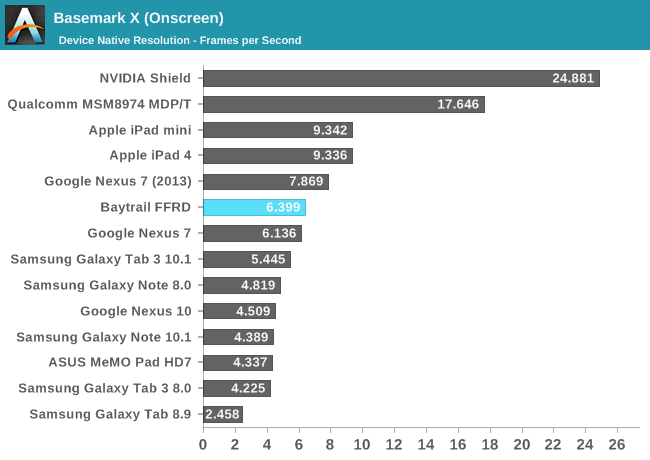
GLBenchmark 2.7
The more interested GLBenchmark numbers, T-Rex HD, show Bay Trail just behind the iPad 4 in performance. It's definitely not bad at all but clearly not industry leading.
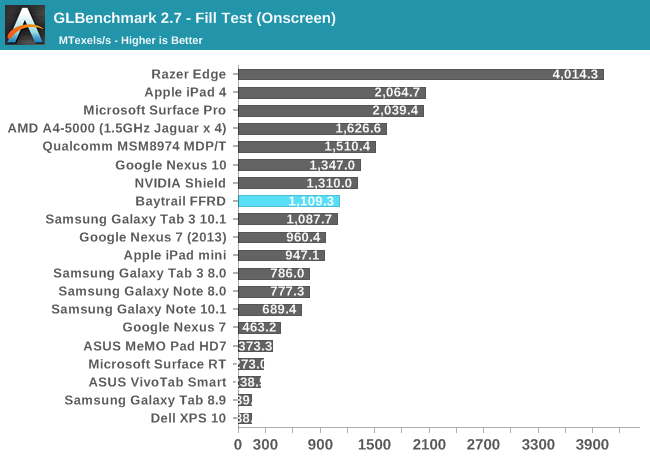
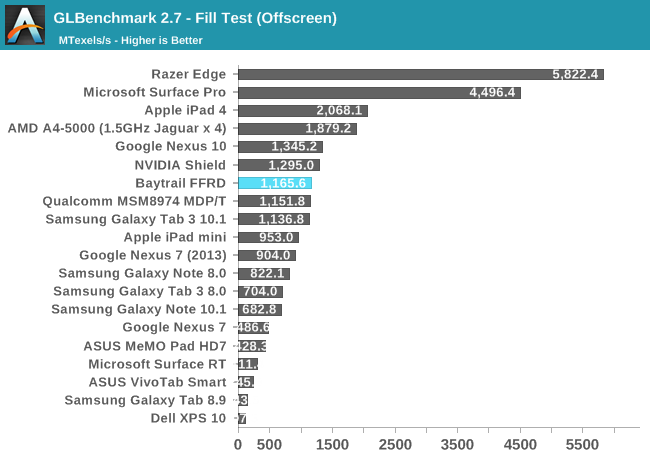
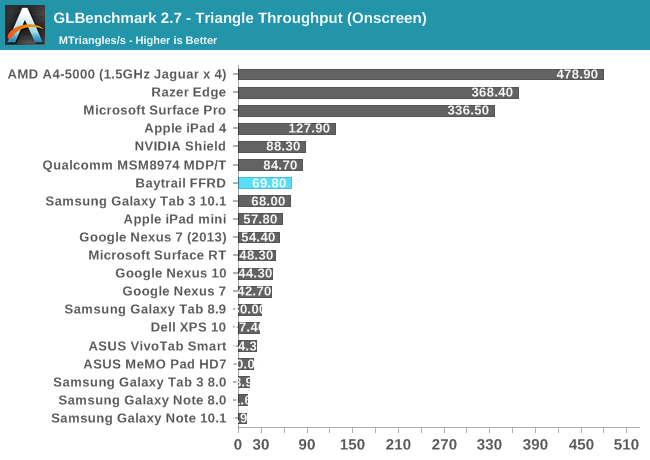
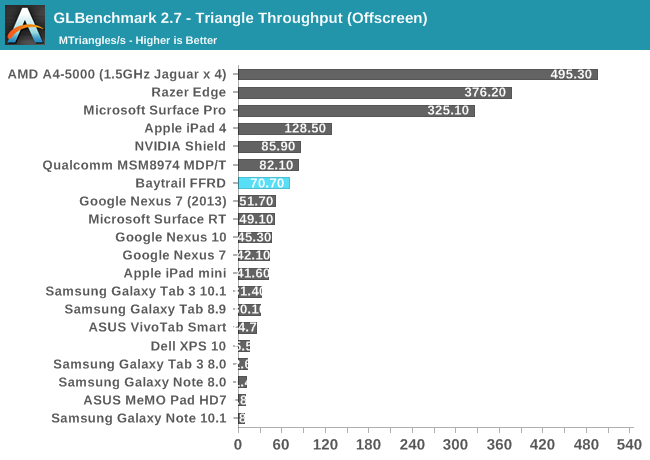
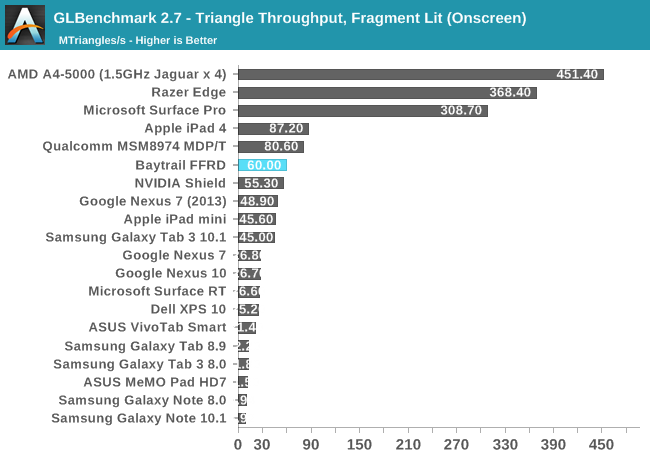
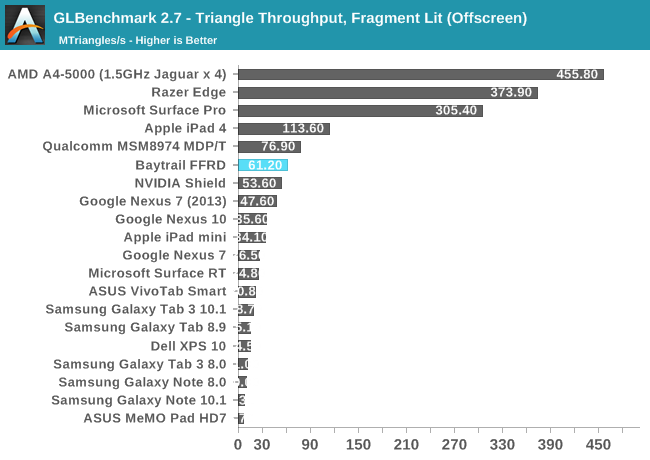
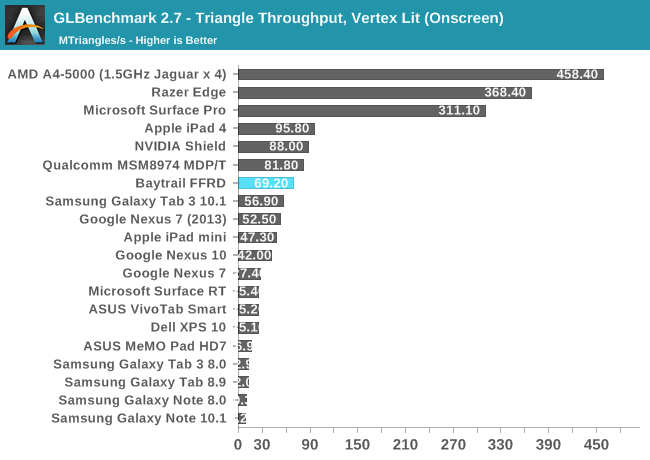
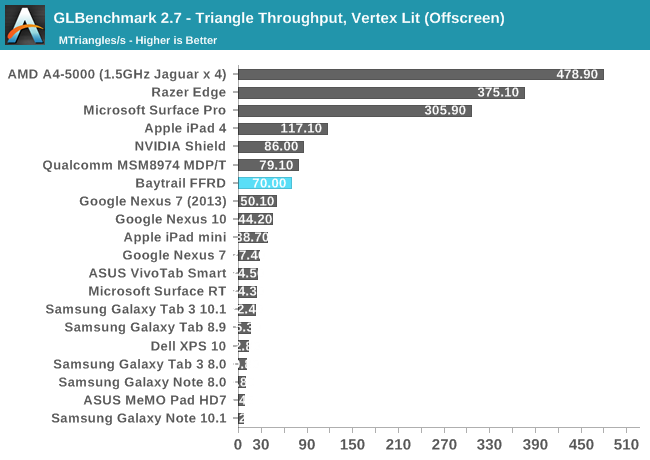
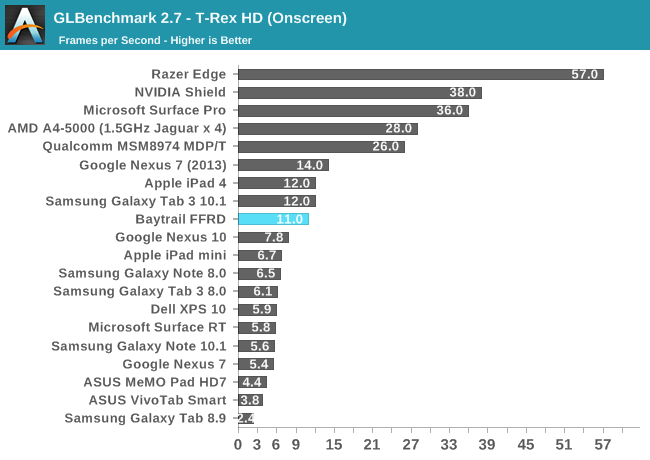
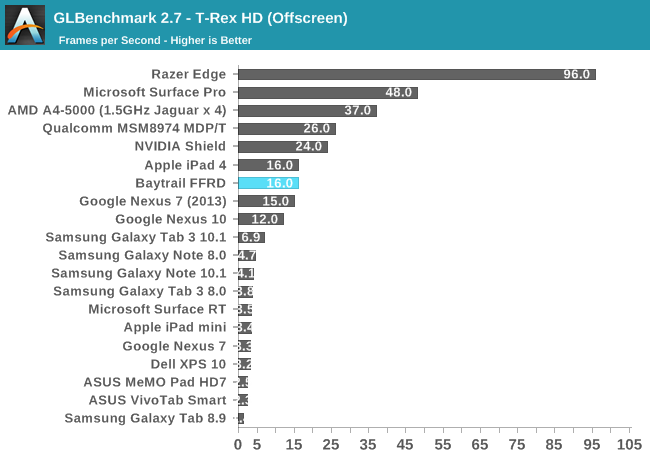
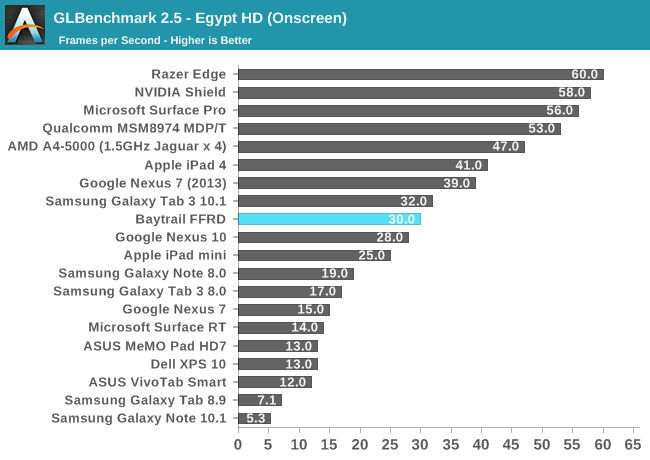
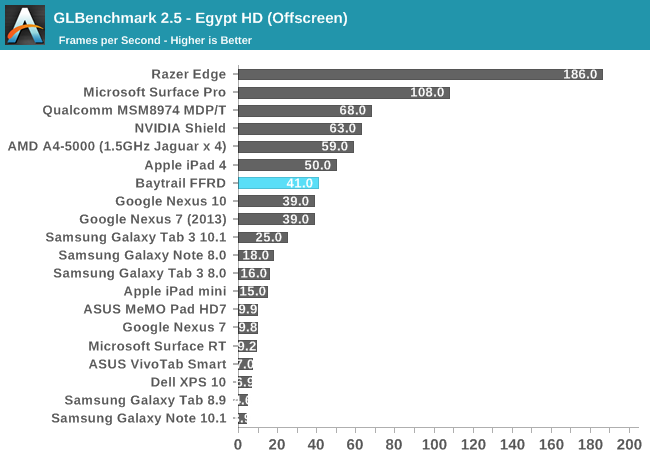
















190 Comments
View All Comments
Geodude074 - Thursday, September 12, 2013 - link
The new Asus Transformer Book T100 with Bay Trail T and EMMC is only $350.RU482 - Wednesday, September 11, 2013 - link
BayTrail-t does not have SATA, but BayTrail-M and -D dozeo - Wednesday, September 11, 2013 - link
It's the Tablet optimized version that'll compete with ARM based devices... though, it'll have access to faster LP-DDR3 RAM (Clover Trail was stuck with LP-DDR2), and faster v4.5 eMMC instead of the older v4.41 eMMC drives... Meaning drive performance can be up to double as they introduced a nearly double bandwidth connection and enhancements like cache memory...You can already see some demonstrations of Bay Trail vs Clover Trail that shows it doing things like loading a game noticeably faster...
salierim - Wednesday, September 18, 2013 - link
Baytrail systems will come with eMMC 4.51 parts that will run in HS200 mode. Overall perf improvements almost doubles when compared to the previous generation eMMC devices on Clovertrail that were running in DDR50 mode.A5 - Wednesday, September 11, 2013 - link
It's good that Bay Trail is competitive, but I wonder if any notable products will be on the market before the Airmont-based platform next year. That may be the one OEMs are waiting for.jfinely - Wednesday, September 11, 2013 - link
Intel has stated there will more than 60 tablets and 50 2-in-1s notebooks (both Haswell and Baytrail) by the end of the yearA5 - Wednesday, September 11, 2013 - link
That doesn't mean any of them will be good and/or popular. NVidia likes to crow about Tegra design wins, too.Mondozai - Monday, September 16, 2013 - link
Except that they hardly have any.edlee - Wednesday, September 11, 2013 - link
I dont get the point of this soc, snapdragon 800 is out right now and the 800 smokes this cpu which will not be out for 6 months at bestKurge - Wednesday, September 11, 2013 - link
Lol, no it doesn't. Is today backwards day?